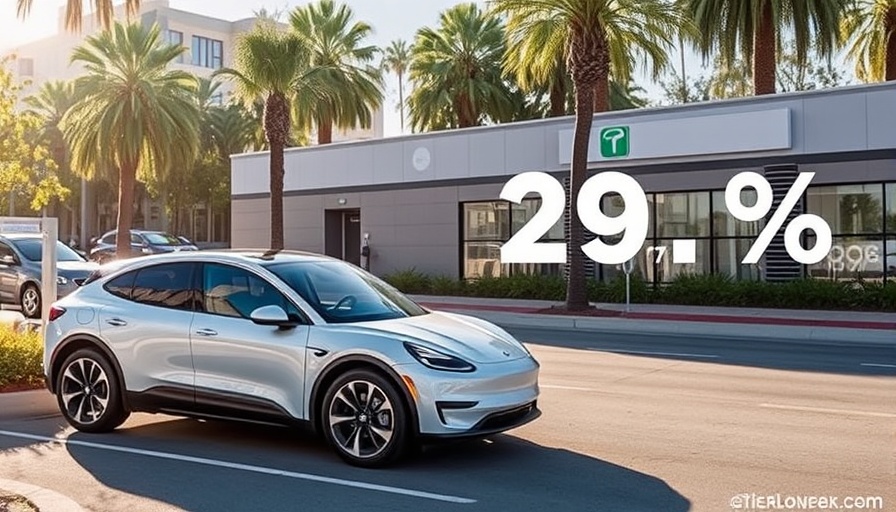
California's Record EV Sales: A Landmark Achievement
In a significant leap towards an electric future, California has achieved an astonishing 29.1% share of electric vehicle (EV) sales among new car purchases in the third quarter of 2025. This record-breaking milestone is marked by the sale of 124,755 fully electric, zero-emission vehicles (ZEVs), reflecting a 30% increase from the previous quarter. Governor Gavin Newsom emphasized this unique achievement, showcasing California's role as a global leader in clean transportation and innovation. "We’re setting new records because this state believes in innovation, not isolation," Newsom stated, reaffirming the state’s commitment to sustainable practices and technologies.
The Impact of Federal Policy Shifts
The surge in EV sales can be partly attributed to significant shifts in federal policies regarding subsidies for EVs. The end of certain EV tax incentives has inadvertently propelled California's market, prompting consumers to invest in electric alternatives while the state strengthens its charging infrastructure. As Nancy Skinner, California’s Energy Commissioner, noted, "This is a defining moment for California’s ZEV progress.” With a charging station network that enables nearly all residents to access a fast charger within a 10-minute drive, the appeal of switching to electric has never been higher.
The Broader Benefits of EV Adoption
As more Californians opt for electric vehicles, there are palpable benefits beyond individual consumer choice. The shift towards clean transportation is not only vital for reducing greenhouse gas emissions but also crucial for improving air quality, particularly in urban areas plagued by pollution. California's proactive regulations and policies stimulate the economy and encourage technological innovation. For instance, the California Energy Commission is expanding its initiatives, including a first-of-its-kind regulation for EV charger reliability, further mitigating concerns about charging infrastructure.
Our Future with Electric Vehicles
Looking ahead, the trend of increasing EV sales in California offers valuable insights into the future of transportation not just in the state but across the nation. With over 146 different models of ZEVs currently available, consumers benefit from a wider choice than ever before. This variety fuels competition among manufacturers, potentially driving prices down and making EVs accessible to an even larger demographic. However, while the third quarter of 2025 signals a peak, experts caution against assuming that this record level of sales will persist indefinitely without continued support and demand generation strategies.
Concluding Thoughts: Moving Forward
The current landscape for transportation in California suggests a promising trajectory towards a cleaner, more sustainable future. However, sustained investment in renewable energy, consumer incentives, and infrastructural improvements remains imperative. As the state continues its commitment to green innovation, the response from both consumers and policymakers will be critical in determining the extent of California's leadership in the global movement towards electric vehicles.
 Add Row
Add Row  Add
Add 




Write A Comment